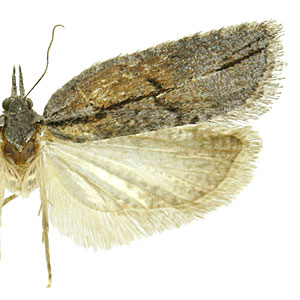Adult Recognition

FWL: 10.0-12.5 mm
Adults have elongate, narrow forewings. Several different forms exist, although most are a shade of gray with black lines and spots for markings. Males lack a forewing costal fold.
Forewing pattern is similar to certain forms of several other Acleris species, such as A. chalybeana and A. hastiana. A genitalic dissection can be used to confirm identity.
Biology

Adults are present in early spring and late fall in California, suggesting two generations per year.
Life history information for this species is undocumented.
Host plants
Larvae of A. senescens have been recorded feeding on plants in the Betulaceae, Rosaceae, and Salicaceae.
| Family | Genus/species | Common name |
| Betulaceae | Alnus rubra Bong. | red alder |
| Betulaceae | Betula L. | birch |
| Rosaceae | Malus Mill. | apple |
| Rosaceae | Prunus virginiana L. | chokecherry |
| Salicaceae | Populus tremuloides Michx. | quaking aspen |
| Salicaceae | Salix hookeriana Barratt ex Hook. | dune willow |
| Salicaceae | Salix L. | willow |
| Salicaceae | Salix lasiolepis Benth. | arroyo willow |
Distribution

Acleris senescens is distributed along the Pacific Coast of North America from British Columbia south to California.
References

Obraztsov, N. S. 1963. Some North American moths of the genus Acleris. Proceedings of the United States National Museum. 114: 213-270.
Powell, J. A. 1964. Biological and taxonomic studies on tortricine moths, with reference to the species in California. University of California Publications in Entomology. Vol. 32. 317 pp.

